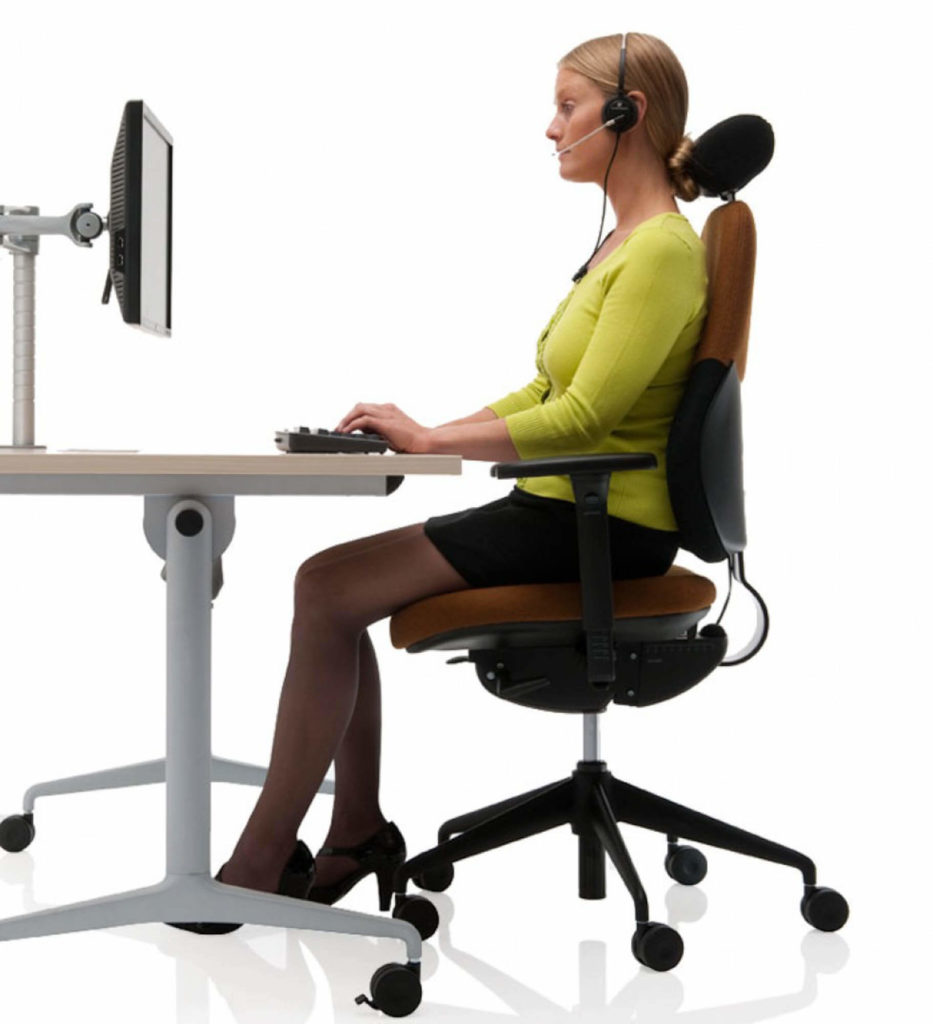To Rest or Not to Rest: Using Armrests for Typing
Often times you’ll find conflicting information regarding certain ergonomics topics and equipment. In today’s blog we’re addressing a recent question sent to us from one of our Back Scholars on whether or not you should use a chair’s armrests while typing.

“Can you provide clarification on the use of wrist/arm rests and when you should/shouldn’t use them? In previous training I’ve been told that rests shouldn’t be used while typing, but that seems different than what’s said here.”
Back School Founder and Director, Ron Porter was on hand to address this one and also forwarded it onto our Director of Education, Dr. Bob Niklewicz, for a second opinion.
“Support of the arms has been shown to be helpful in decreasing the muscle activity in the shoulders and neck on EMG studies. Armrests that support underneath the forearm are the best solution. If that is not possible we believe that using a wrist rest will also provide some relief to those muscles. Our view is that you should rest the base of the palm not the wrist on the support. Therefore we often call it a hand or palm rest not a wrist rest. We generally do NOT recommend a wrist rest while doing mouse activity, as it is a different motion and may cause contact stress at the flexor tendons of the wrist.
I also CCed our Director of Education, Dr. Bob Niklewicz and he may have some response as well.”
Here’s what Dr. Bob had to add.
“I totally agree with Ron’s comments. I would add that the armrests are NOT meant as full support/constant contact while typing but rather between thoughts and moments not typing. These “Mini” breaks are the key to allowing the circulation to refresh tissue with each break, no matter how short they are.
I also agree that resting the wrist flat on the pads is not desirable. I would rather that the typist turn their wrists so the thumb is on top of a loose fist during those brief moments. This also relaxes the hand by placing them in a neutral position.”
Do you have any experience with armrests in your ergonomics assessments? Positive or negative? Let us know in the comments.



I have been performing office workstation assessments in a large multi-hospital setting for over twenty years and have found that the use of a well-designed armrest can be a critical component of a properly positioned and supported upper extremity. The arm has weight to it, thus must either be supported by constant contraction of the proximal musculature or by resting it on a solid surface; usually it will be a combination of the two. If a sustained forward reach for the desktop is required, an imbalance of the musculoskeletal and neurovascular structures of the shoulder may occur along with contact stress along the volar wrist or forearm from resting on the front edge of the desk. A flat armrest positioned close to the body will allow the proximal upper quarter to relax while the forearm is supported over a large surface area. The keyboard and mouse will need to be positioned directly under the hands, on a surface the same height as the armrest, either on the desktop or a keyboard platform. I totally agree with you regarding the optional use of a palm rest for the keyboard but avoidance of a wristrest for the mouse. It has been very gratifying to see the immediate improvement most clients experience once the appropriate adjustments to their workstation have been made.
Thank you for your great insight to the use of armrest. In my experience most of the patient with shoulder impingement who work in office setting, used to lean on their arm. Also they begin feeling better with pain as the consciously avoid leaning on the affected arm and rest on the back rest of the chair.
Regards